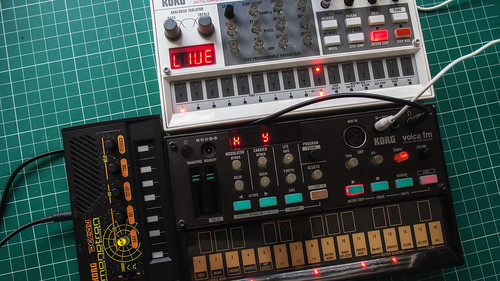Anyone with a passing interest in pop music or studio production could not help but notice the fiftieth anniversary of The Beatles' album
Sgt. Pepper’s Lonely Hearts Club Band. It's the first time an album by this seminal group has been released in archival fashion, which is perhaps surprising. There's lots of exciting news here, most prominent being a brand new remix from the original masters, by none other than George Martin's son Giles.
Sgt. Pepper is often mooted as the band's finest album... indeed the best record of all time. It isn't, not by a fair shot. I would give
Abbey Road and
The Beatles precedence, and have sympathy for those who choose
Revolver as well. It's also called the first concept album, though the conceit was paper thin. Mishearing the words "salt and pepper", McCartney imagined alternative identities for his bandmates as part of some local music hall act. This was by no means a bad strategy to break them out of their equally artificial roles as John, Paul, George, and Ringo. But the only trace of this concept that made it to vinyl were the two renderings of the title track and their dress-up antics on the cover. So, no, not really a concept album and certainly not a good example of one.
But what the album
does have are cracking songs, fluid performances, unusual songwriting, imagination to burn, and timbres previously unheard on record. It was an experimental album in a way pop music can never again be. Back in 1966 there was technology to figure out. The musicians were continuously asking themselves questions like: "What strange thing can we do with this tape deck that serves the song?" and "What if we played three pianos simultaneously and miked up the full decay?" and "What if we played this backwards, or down a fifth or up an octave?" There are only so many times you can ask these questions before they become part of the formula. The Beatles and George Martin asked these questions first. And, incredibly, answered them best. (I should not forget the wonderful engineer Geoff Emerick.)







![punchcard [Ventriloquist 1997]](https://blogger.googleusercontent.com/img/b/R29vZ2xl/AVvXsEhTga8S3HGyz0YgiWLzugyeEab-SyAziaXwGw-zTGGWbrsYVj_Zbr3I4dSzQIEgv4-EoE6i8HVqNTZOOjToCmwoxTNiMBENY2K5MGvSvyDGIoBgNik7O-eL1Aqk94DFkTTBofT8/s1600/DEM-punchcard-%255BVentriloquist-1997%255D.jpg)


